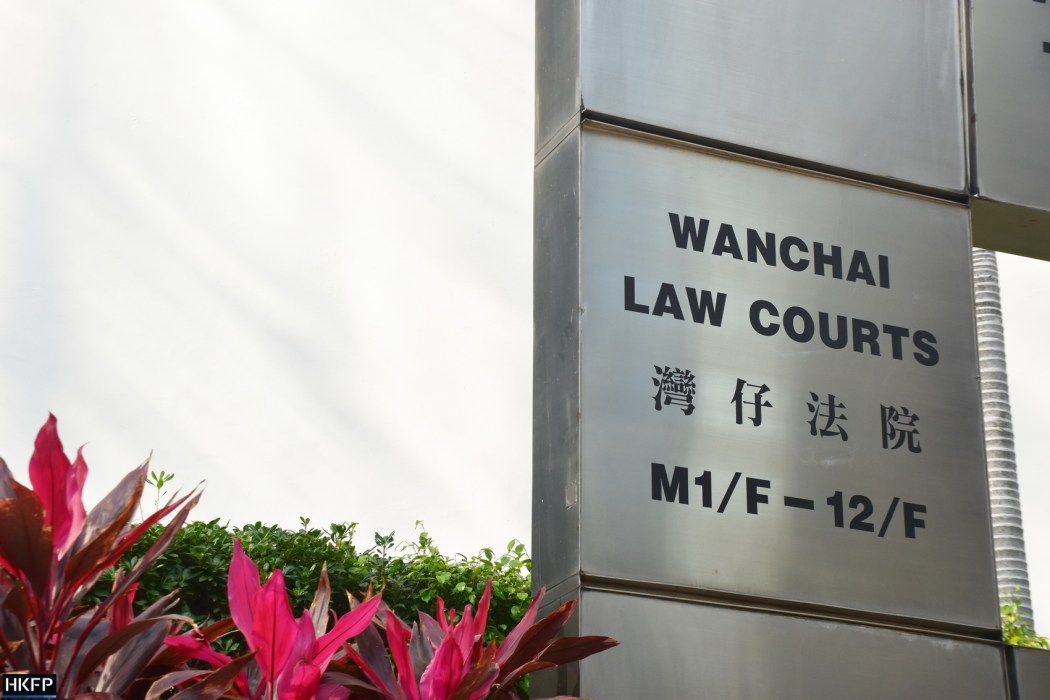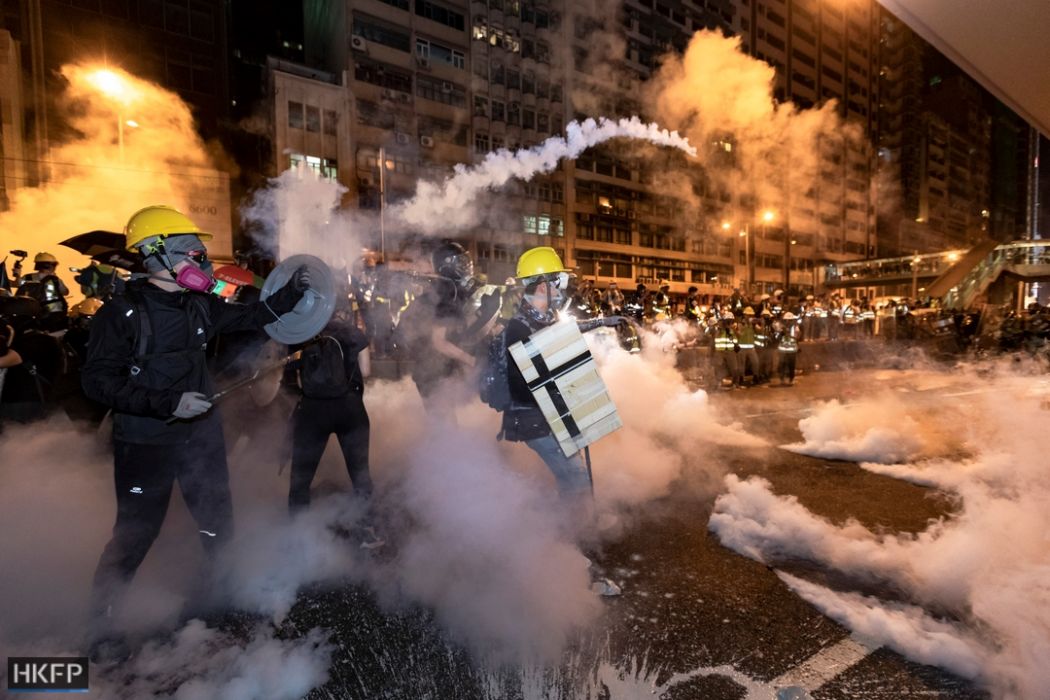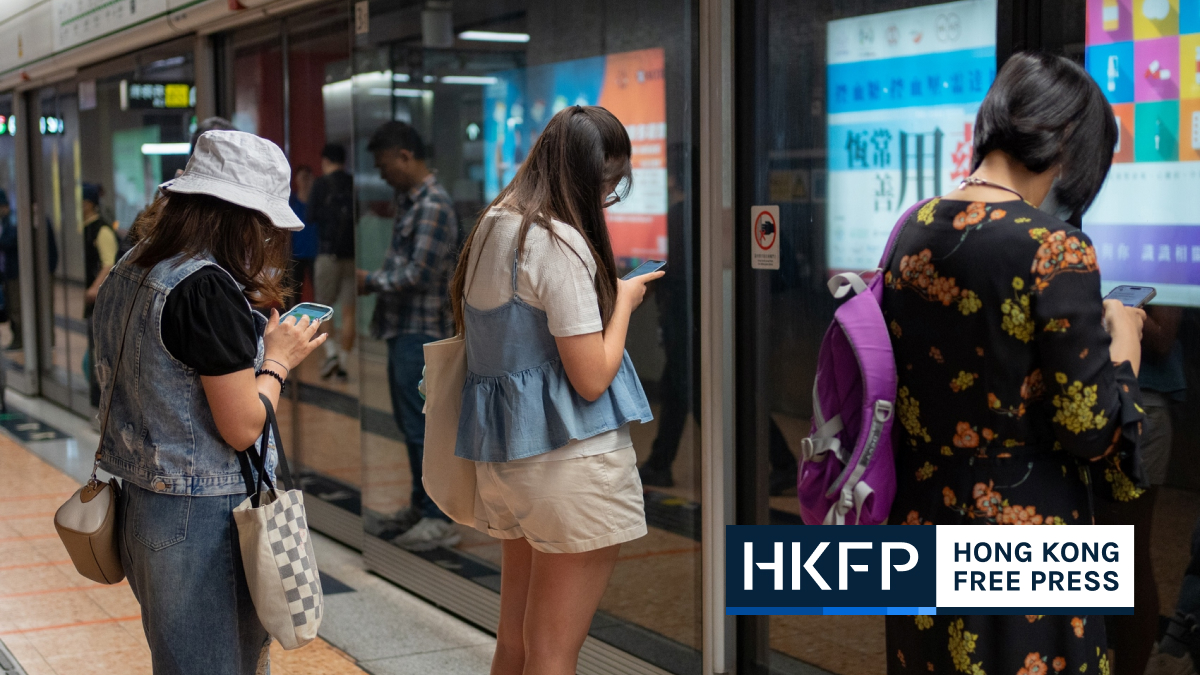As the fourth anniversary of the 2019 pro-democracy protests nears, the city’s courts have yet to finish handling all cases relating to the citywide unrest.

Police told HKFP that 2,899 of the 10,279 people arrested between June 9, 2019, and October 31, 2022, have been prosecuted, with 765 charged with rioting. Those convicted face a sentence of up to 10 years in prison.
What were the 2019 Hong Kong protests about? – click to view.
Protests erupted in June 2019 over a since-axed extradition bill. They escalated into sometimes violent displays of dissent against police behaviour, amid calls for democracy and anger over Beijing’s encroachment. Demonstrators demanded an independent probe into police conduct, amnesty for those arrested and a halt to the characterisation of protests as “riots.”
In mid-March, the Commissioner of Police Raymond Siu told reporters that police would announce how they planned to deal with the remaining 6,000 cases that month.
In response to HKFP’s enquires on March 29, the police did not give a definitive answer about the timeline, but said they would “review the evidence in these cases, consider multiple factors – including their severity – and consult the Department of Justice when needed, in striving to decide how to deal with them as soon as possible.”
According to publicly available court judgements compiled by HKFP, a total of 295 defendants have been tried over their alleged participation in riots during the anti-extradition law protests and unrest. Fifty-six were subsequently acquitted.
How did the court decide that these 239 defendants – while pleading not guilty initially – indeed partook in a riot? How did protest attire and gear factor into the convictions? What were the judges’ comments on the rioting cases, and on the protest movement? HKFP analysed hundreds of court judgements and reasons for sentencing to find the answers.
What constitutes rioting?
Rioting is outlawed by the Public Order Ordinance, which states that any unlawful assembly can become a riot when someone involved “commits a breach of the peace.”
The same legislation says that an assembly may become unlawful if a group of three or more people conduct themselves in a “disorderly, intimidating, insulting or provocative manner,” if they intend to, or are likely to, cause fear that they will breach the peace or provoke others into doing so.
While critics had complained that the legal definition of rioting was “vague and arbitrary,” government lawyers did not see much success when they began to charge alleged rioters over the demonstrations against the extradition bill.

In the first eight riot cases in which defendants pleading not guilty, only six out of the 25 tried were convicted. Five were proven to have directly participated in violent acts or arson. The remaining protester was found to be fully equipped in protest gear and running away from police at a riot, as his companion attacked an officer.
Meanwhile, District Judges Anthony Kwok, Frankie Yiu and Sham Siu-man acquitted the rest of the 19 defendants as they said the prosecution could not prove their offences beyond a reasonable doubt.

While some defendants were found wearing black attire and protective gear commonly used by frontline protesters – such as helmets, gas masks, goggles and gloves – the judges still cleared them of their charges, citing a lack of direct proof over their alleged participation in riotous assemblies.
In his judgement acquitting Henry Tong, Elaine To and Natalie Lee, Judge Kwok also ruled that the doctrine of “joint enterprise” in common law – whereby a secondary offender may be found guilty of the same charge as a primary defendant – could not be applied to rioting and unlawful assembly cases.
But the judge’s decision was challenged by then-justice secretary Teresa Cheng. A Court of Appeal ruling handed down on March 25, 2021, overturned Kwok’s interpretation, saying the exclusion of the common law principle for such cases would “have dire consequences for the maintenance of public order.”
Citing an UK court decision in 1970, the Court of Appeal said both the people who participated in the unlawful assembly or riot – or those who “actively encouraged or promoted it” – should be held equally liable of the offence.

The higher court added that unlawful assemblies and riots “involve a myriad of participants playing various roles,” including individuals who give directions or provide funds and material to the direct participants. “Some may not even be present but are clearly participants under the doctrine of joint enterprise,” it said.
The Court of Appeal ruled that, while a merely being present would not render individuals liable for unlawful assembly or rioting convictions, they would be subject to legal sanctions if they became “involved in the violence or threat of violence as a principal or an accessory or a party to a joint enterprise.”
Common purpose
The Court of Appeal’s judgement was subsequently cited widely by different judges when making their decisions in riot cases. Between April to October 2021, the court convicted a total of 25 people for rioting. While there was no direct evidence of what act or threat of violence 16 of them had committed, they were found to have been present at riots and shared a “common purpose” with other perpetrators.
The first verdict handed down to rioting suspects who had pleaded not guilty following the Court of Appeal’s decision was penned by District Judge Ernest Lin.

In that case, Lin convicted all four defendants who appeared in court. A fifth had jumped bail and fled. While there was direct evidence of one of their actions during the riot, the others were found guilty as they had remained with protesters on the scene, and were therefore seen as encouraging others to engage.
Among those found guilty of rioting during that period were five members of the mob who stormed Yuen Long MTR Station on July 21, 2019. They indiscriminately assaulted passengers, reporters, pro-democracy protesters and then-lawmaker Lam Cheuk-ting.
While there was no direct proof that the trio had actually attacked anyone, Judge Eddie Yip still found them guilty as they either encouraged others or shared a common purpose to “beat up those wearing black” at the railway station.
Then, after October, another landmark court ruling was handed down. This time, Henry Tong brought his case to the city’s top court, together with Lo Kin-man, who was previously jailed for rioting during the 2016 Mong Kok unrest.
‘Facilitating, assisting and encouraging’
In a judgement on November 4, 2021, the Court of Final Appeal dismissed the views held by the Court of Appeal and ruled that prosecutors could not charge individuals who were not present at an unlawful or riotous assembly under the doctrine of joint enterprise “in its basic form.”
Nevertheless, the city’s top court ruled that absent defendants promoting a criminal assembly, or helping it move forward, could still be covered by “secondary and inchoate liability offences,” such as conspiracy or incitement.
The court also clarified how someone could “take part” in a riot – by committing a breach of the peace; “or acting in furtherance of such prohibited conduct by facilitating, assisting or encouraging those taking part in the criminal assembly.”

While restating that merely being present at a riot would not give rise to criminal liability, the Court of Final Appeal said a person on the scene might be held guilty if they provided “encouragement by words, signs or actions.”
It also urged lower courts to take into account the “possible fluidity” of a criminal assembly, as well as the communications shared among participants when determining the time, space and scope of the situation.
HKFP analysis found that, as of February, 154 of the 208 defendants who initially pleaded not guilty had been convicted of facilitating, assisting, or encouraging a riot – or having the intention to do so – following the top court’s decision.
Instead of any direct engagement in violence or threatening to do as such, these 154 offenders were found to have “amplified the momentum” of the riot by remaining on the scene with other protesters. The court also ruled that 145 of them had encouraged others at the riot by wearing similar clothing, or protective gear, to fellow protesters.
Six were found to have intended to assist other participants of the criminal assemblies by bringing medical supplies – such as saline solution, which was commonly used by protesters to ease the effects of tear gas.
After the top court’s ruling, the prosecution also sought to overturn some of the earlier court decisions that had cleared protesters of wrongdoing.
According to The Witness, government lawyers had asked the District Court in December 2021 to grant an order to re-arrest the eight defendants cleared of rioting by then-judge Sham back in October 2020. The prosecution’s appeal application was heard in January this year.
Judges’ stance on 2019
When handing down sentences in rioting cases, some judges made comments about the defendants’ situation, as well as the 2019 unrest as a whole.
As Judge Amanda Woodcock jailed Sin Ka-ho on May 14, 2020 – the first instance of a rioting conviction from the 2019 protests – she stated that the freedom of assembly was not absolute.

“Once a protester becomes involved in violence or the threat of violence, a breach of peace, then that protester crosses the line between constitutionally protected peaceful assembly and demonstration to an unlawful activity which is subject to legal sanctions,” she said.
“There is such a line to protect public order because society is prone to descend into anarchy if public order is not preserved.”

Four months later, when Judge Anthony Kwok handed down a sentence for the first defendant convicted of rioting over the 2019 protests following a trial, he said that the court “should not, and would not, consider the underlying political factors when handling this case.”
“The court has no intention to make any judgement over the background of the incident or political disputes of that time,” he added.
Meanwhile, some judges were more vocal about what happened during the months-long demonstrations.
In June 2021, Judge Ernest Lin criticised violent protesters for “hijacking” what had began as peaceful protests in mid-2019. He then jailed two defendants who pleaded guilty to rioting in Causeway Bay in November 2019.
“In the end, their acts, means and logic became the same as that of the tyranny they said they were opposing. Their freedom did not tolerate others’ freedom. What they did was another form of tyranny – that they could legitimately treat dissidents with violence and silence their voices,” Lin said.

The idea that pro-democracy protesters had forced their beliefs on others and gone against the democratic principles they claimed to pursue was persistent in the reasons Lin gave for his sentencing.
When jailing a defendant who brought a blowtorch, as well as an umbrella, to a riot, Lin made reference to the 79-day pro-democracy street occupations in 2014. “The Umbrella Movement was a peaceful means of protest that used to be a source of pride for Hongkongers – with a dignified, non-violent, and persistently humble stance,” he said.
But Lin said the city’s pro-democracy movement had been hijacked by violent demonstrators: “On the surface, wielding an umbrella was a non-violent means of protest, and a symbol of peaceful resistance – but, under the cover of umbrellas, they committed all kinds of atrocities.”
Another judge, Stanley Chan, repeatedly said the rioting cases he handled were “social tragedies”, where misguided young people committed offences and were jailed while the “hidden hands” who encouraged them remained free from penalty.
As Chan handed down a sentence for six offenders over a riot on September 29, 2019, he cited some of them as saying that there were protesters – or rioters – handing out free respiratory masks and helmets. “These ‘bystanders,’ who were not present on the scene as true facilitators – have they compensated for the misery of the six defendants, and their families, or sought to mend the huge losses faced by the defendants who lost their freedom, as well as their lifegoals?” he asked.
When sentencing a 20-year-old to a training centre on March 27, Chan questioned the defendant’s initial description of the 2019 protests as a “social movement.”
“Speaking from any perspective, what happened then were thorough, organised acts of social disturbance and violence,” Chan said, adding that the defendant’s stance may have stemmed from a “biased hearing of opinions, misunderstandings or wrongful judgments.”
Support HKFP | Policies & Ethics | Error/typo? | Contact Us | Newsletter | Transparency & Annual Report | Apps
Help safeguard press freedom & keep HKFP free for all readers by supporting our team

LATEST FROM HKFP
HKFP has an impartial stance, transparent funding, and balanced coverage guided by an Ethics Code and Corrections Policy.
Support press freedom & help us surpass 1,000 monthly Patrons: 100% independent, governed by an ethics code & not-for-profit.










